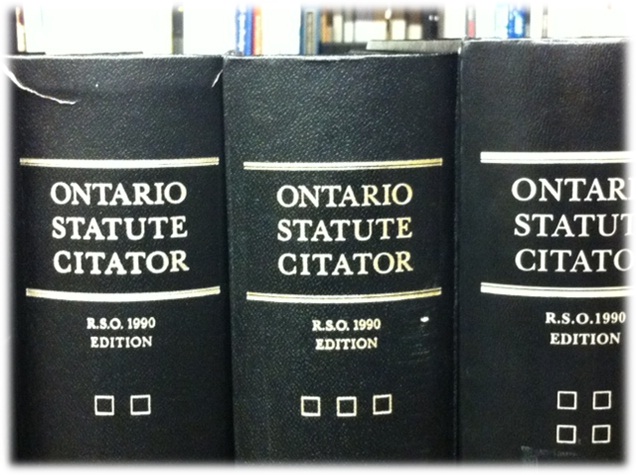Ontario Bill 66: Red Tape Rewind

As with any significant changes in political leadership, those of us within the environmental assessment field are interested in any potential changes to regulations based on the incoming administration’s agenda. The recent election of the Progressive Conservatives in Ontario is one such event. With the recent introduction of Bill 66, the PC government is seeking to create a new tool for municipalities, in the form of a new class of by-law (open-for-business by-laws). If enacted, open-for-business by-laws would allow land development proponents to avoid a range of planning considerations and restrictions.
Specifically, Schedule 10 of Bill 66 amends the Planning Act to add a new Section 34.1, which allows municipalities to pass open-for-business planning by-laws. These by-laws involve the municipality’s powers under Section 34 of the Planning Act and allow municipalities to impose one or more specified conditions. A municipality may pass an open-for-business planning by-law only if it has received approval to do so in writing by the Minister and if criteria as may be prescribed are satisfied.
Certain provisions of the Planning Act and other Acts that would ordinarily apply to a by-law passed under section 34 do not apply to an open-for-business planning by-law (see below for a list of these provisions). Essentially, these changes amount to clearing a path for development through most significant planning documents found in the province, at both municipal and provincial levels.
The following provisions do not apply under an open-for-business planning by-law:
- Subsection 3 (5): PPS and provincial plans
- Section 24.: official plans
- Subsections 34 (10.0.0.1) to (34): zoning by-law consultation, public notices, LPAT appeals
- Section 36: holding provisions
- Section 37: bonus zoning with associated conditions
- Section 39 of the Clean Water Act, 2006: Source Protection Plan governance of local Planning Act and Condominium Act
- Section 20 of the Great Lakes Protection Act, 2015: Great Lakes Protection Act Initiatives governance of local Planning Act and Condominium Act
- Section 7 of the Greenbelt Act, 2005: Greenbelt Plan governance of local Planning Act and Condominium Act
- Section 6 of the Lake Simcoe Protection Act, 2008:Lake Simcoe Protection Plan governance of local Planning Act and Condominium Act
- Subsection 31.1 (4) of the Metrolinx Act, 2006: Transportation Planning Policy Statement governance of local Planning Act and Condominium Act
- Section 7 of the Oak Ridges Moraine Conservation Act, 2001: Oak ridges Moraine Conservation Plan governance of local Planning Act and Condominium Act
- Section 13 of the Ontario Planning and Development Act, 1994: Development Plan exemption
- Subsection 14 (1) of the Places to Grow Act, 2005: Growth Plan exemption
- Section 12 of the Resource Recovery and Circular Economy Act, 2016 - Policy Statement exemptions:
- City of Toronto Act, 2006.
- Condominium Act, 1998.
- Consumer Protection Act, 2002.
- Environmental Assessment Act.
- Environmental Protection Act.
- Municipal Act, 2001.
- Nutrient Management Act, 2002.
- Ontario Water Resources Act.
- Planning Act.
- Any prescribed Acts.
- Any prescribed provision.

With respect to heritage management specifically, under Bill 66, Subsection 3(5) and Subsection 24 of the Planning Act will not apply. Subsection 3(5) is the section of the Planning Act that gives authority to the Provincial Policy Statement (PPS 2014). Therefore the PPS 2014, and the archaeology and heritage policies it contains, will no longer apply. Subsection 24 of the Planning Act states all public work and by-laws passed must conform to an Official Plan. Therefore, archaeology and heritage policies within a municipal Official Plan will no longer apply (such as Archaeological Management Plans). These are the two main regulatory triggers leading to archaeological and heritage assessments under the Planning Act, outside of O. Reg. 544/06 covering plans of subdivision.
While open-for-business by-laws shelter proponents from policies originating from planning documents, the by-laws do not suspend requirements originating from other legislation and simply communicated through these documents. Archaeology is a perfect example. While the authority of Archaeological Management Plans (AMP) is derived from Official Plans which can be overlooked by an open-for-business by-law, the protection of archaeological sites derived from the Ontario Heritage Act remains in place.
The net effect is that while the AMP, as a warning and risk management tool, might be ignored, proponents are still culpable for any damage to archaeological sites under the Ontario Heritage Act.

Consolidating Diverse Requirements, Not Just Creating Them
The planning documents considered as hindrances to development by Bill 66, could be understood to actually expedite development by consolidating a range of legislative requirements into a single document directed at specific domains of provincial and municipal planning. Yes, sometimes in designing these plans, legislative requirements are calibrated beyond the minimum and sometimes additional hurdles may be introduced. However, suspending these plans could foreseeably hold up development as proponents and municipal planners are forced to revert to default provincial regulations scattered across an array of legislative sources (or judicially-sourced obligations such as Indigenous engagement in the PPS). Alternatively, they could try and reverse engineer suspended planning documents to try and distinguish the legislative foundation from the new structures.
Consider Google Maps and other dynamic digital map applications. These platforms consolidate mapping data previously only accessible through the combination of multiple analog maps at varying scales. The apps then dynamically reference traffic and weather conditions, account for road closures and tolls across a variety of means of travel (walking, buses, cars, etc.). Eliminating these platforms doesn’t negate the need of many for maps (people still need to know where they are going) and it certainly doesn’t eliminate the hazards and closures these platforms report, it simply removes the most efficient means of arriving at their destination.
Taking First Steps So You Don’t Have To
Not only do planning documents help make sense of applicable legislation, they can also serve to expedite early steps in the development process. Returning to our archaeological management plan example, AMPs with up-to-date archaeological potential layers (layers indicating where archaeological deposits might exist) serve as a preliminary site planning tool for land developers. Essentially, the AMP provides developers with risk management insights they would otherwise not have until they completed a Stage 1 assessment. While the AMP doesn’t typically replace a Stage 1, it does allow the developer to balance risk and reward before beginning down the assessment path, as opposed to after. These benefits are the return on investment in designing and implementing the AMP. Suspend an Official Plan, and by extension its AMP, and it’s not clear what happens to that resource. According to the Ontario Heritage Act, archaeology would still need to be protected and based on the municipal planner’s interpretation of archaeological potential (no doubt influenced by the AMP’s extensive research) assessments may need to be undertaken. However, would the developer still refer, know to refer or even be able to refer to the AMP in order to best weigh the risks/rewards of proceeding?
We focus on AMPs here, since heritage is our wheelhouse, but the reader can appreciate how many other similar scenarios could play out across a range of planning domains given the diversity of legislation affected by Bill 66 and the breadth of Official Plans.
Avoid Hunting White Whales, Focus on Dissecting Leviathan
In Bill 66, Ontario is pursuing regulatory reduction through the avoidance of contemporary planning tools, in effect chasing an allegorical White Whale of red-tape reduction. Instead, the government should turn its attention inward and seek to understand the systems operating within its own mass (a manifestation of Hobbes’s Leviathan).
If the goal of the provincial government is to truly expedite review processes and alleviate red-tape- related headaches, then a much more profound, though perhaps less flashy solution (most internal processes are), would be the harmonization of data intake across ministries and between scales of government. In short, reduce the interactions of public service/arms-length agency clients with government to the bare minimum by digitizing and consolidating forms, applications, approvals and permits, supported by a robust back-end tracking and distribution system.
Ontario already has ONe-key, apply the same principles to creating ONe-form.
Once again, our wheelhouse is heritage. Within that sector we are constantly addressing the implications of the past in the present day. We therefore appreciate that change in the present must be mindful of relevant historical circumstances. In legislation and policy especially. We talked before about the progression of cemeteries legislation and policy and how events like the Grimsby ossuary excavation necessitated the evolution of governance. Bill 66 harkens back to a time before similar planning evolutions took place and risks repeating whatever events necessitated their development. Rather than revert to the past in search of answers, the provincial government should look to the future appreciating the evolutionary continuum of governance. Modernizing and harmonizing data collection and processing is one element of that future likely to contain the answers the government currently looks for in the past.
We specialize in the past, it does not contain the answers the government seeks.
To provide comments on Bill 66 click here. To comment on Planning Act changes specifically click here. - Commenting closes Jan. 20, 2019.
